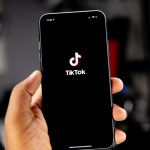News
The proposed guidance would only allow internet providers to use the terms ‘fibre’ and ‘full fibre’ to indicate fibre-to-the-home (FTTH), not the inferior fibre-to-the-cabinet (FTTC)
You only have to spend a short time in the world of telecoms to realise that the sector loves an acronym.
From relatively benign terms like CSP (communications service provider) to the more arcane, such as FDD (frequency division duplexing), navigating telecoms’ linguistic landscape can be a minefield for even the most seasoned professional.
But while all this represents a relatively minor stumbling block for those within the industry, for the broader public the challenge is far greater.
For years now, various surveys had drawn attention to the fact that UK customers typically have a relatively low understanding of what their broadband package actually contains. In more recent studies by Ofcom itself, the regulator found that 27% of broadband customers lacked confidence in understanding the language used by their provider. Indeed, this fact was borne out by related research that showed 46% of customers believed they were connected to full fibre (i.e., FTTH), while actually living in areas where FTTH was unavailable.
Clearly, there is a communications breakdown here between broadband providers and their customers, and this is exactly what Ofcom is today attempting to remedy with the launch of a new consultation.
Under the newly proposed rules, broadband providers would be forced to use the term ‘full fibre’ only for FTTH, as well as providing a more detailed explanation of terminology where appropriate.
The broadband industry is being invited to share its thoughts on the proposed rules, with a deadline for comments on May 3.
“It’s vital that customers are provided with the right information to help them choose the best broadband service for them. But some of the industry jargon used to describe the underlying technology supporting their broadband service can be unclear and inconsistent, meaning customers are left confused,” explained Selina Chadha, Ofcom’s Director of Connectivity. “So today we’re proposing to introduce new guidance to ensure that broadband firms give clearer, straightforward information about their services – making it easier for people to take advantage of more reliable, and potentially higher speed technology, as it becomes available.”
Are ISPs doing enough to communicate clearly with their customers? Join the telecoms ecosystem in discussion at this year’s Connected North conference live in Manchester
Also in the news:
Viasat–Inmarsat merger gets provisional greenlight from CMA
Verizon shuffles executive team in search of growth
Ericsson to pay DoJ $206.7m over bribery scandal

















